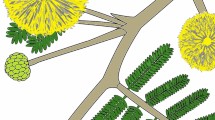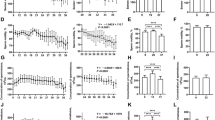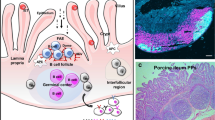Abstract
Cattle are deemed less susceptible to mycotoxins due to the limited internal exposure resulting from rumen microbiota activity. However, the significant amounts of Fusarium mycotoxins deoxynivalenol (DON) and zearalenone (ZEN) frequently detected in bovine follicular fluid samples suggest that they could affect ovarian function. Both mycotoxins trigger several patterns of cell death and activate the NLRP3 inflammasome in the intestine. In vitro studies have reported a number of adverse effects on bovine oocytes. However, the biological relevance of such findings with regard to realistic concentrations of DON and ZEN in bovine follicular fluid is still not clear. Hence, it is important to better characterize the effects of dietary exposure to DON and ZEN on the bovine ovary. Using bovine primary theca cells, this study investigated the effects of real-life patterns for bovine ovary exposure to DON and ZEN, but also DON metabolite DOM-1, on cell death and NLRP3 inflammasome activation. Exposure to DON starting from 0.1 μM significantly decreased theca cell viability. The kinetics of phosphatidylserine translocation and loss of membrane integrity showed that ZEN and DON, but not DOM-1, induce an apoptotic phenotype. qPCR analysis of the expression of NLRP3, PYCARD, IL-1β, IL-18, and GSDMD in primary theca cells at concentrations of mycotoxin previously reported in cow follicular fluid clearly indicated that DON and DOM-1 individually and in mixture, but not ZEN, activate NLRP3 inflammasome. Altogether, these results suggest that real-life dietary exposure of cattle to DON may induce inflammatory disorders in the ovary.
Graphical Abstract





Similar content being viewed by others
References
Alassane-Kpembi I, Pinton P, Oswald IP (2019). Effects of mycotoxins on the intestine. Toxins (Basel) 11(3). https://doi.org/10.3390/toxins11030159
Bailey JR, Breton J, Panic G, Cogan TA, Bailey M, Swann JR et al (2019) The mycotoxin deoxynivalenol significantly alters the function and metabolism of bovine kidney epithelial cells in vitro. Toxins (Basel) 11(10). https://doi.org/10.3390/toxins11100554
Baravalle ME, Stassi AF, Velázquez MML, Belotti EM, Rodríguez FM, Ortega HH et al (2015) Altered expression of pro-inflammatory cytokines in ovarian follicles of cows with cystic ovarian disease. J Comp Pathol 153(2):116–130. https://doi.org/10.1016/j.jcpa.2015.04.007
Ben Salah-Abbès J, Mannai M, Belgacem H, Zinedine A, Abbès S (2021) Efficacy of lactic acid bacteria supplementation against Fusarium graminearum growth in vitro and inhibition of zearalenone causing inflammation and oxidative stress in vivo. Toxicon 202:115–122. https://doi.org/10.1016/j.toxicon.2021.09.010
Cai G, Si M, Li X, Zou H, Gu J, Yuan Y et al (2019) Zearalenone induces apoptosis of rat Sertoli cells through Fas-Fas ligand and mitochondrial pathway. Environ Toxicol 34(4):424–433. https://doi.org/10.1002/tox.22696
Cohen J, Chabbert-Buffet N, Darai E (2015) Diminished ovarian reserve, premature ovarian failure, poor ovarian responder–a plea for universal definitions. J Assist Reprod Genet 32(12):1709–1712. https://doi.org/10.1007/s10815-015-0595-y
Daenicke S, Keese C, Goyarts T, Döll S (2011) Effects of deoxynivalenol (DON) and related compounds on bovine peripheral blood mononuclear cells (PBMC) in vitro and in vivo. Mycotoxin Res 27(1):49–55. https://doi.org/10.1007/s12550-010-0074-3
Debevere S, Cools A, Baere S, Haesaert G, Rychlik M, Croubels S et al (2020) In vitro rumen simulations show a reduced disappearance of deoxynivalenol, nivalenol and enniatin B at conditions of rumen acidosis and lower microbial activity. Toxins (Basel) 12(2). https://doi.org/10.3390/toxins12020101
EFSA CONTAM Panel (EFSA Panel on Contaminants in the Food Chain), Knutsen HK, Alexander J, Barregard L, Bignami M, Brüschweiler B, Ceccatelli S, Cottrill B, Dinovi M, Grasl-Kraupp B, Hogstrand C, Hoogenboom LR, Nebbia CS, Oswald IP, Petersen A, Rose M, Roudot A-C, Schwerdtle T, Vleminckx C, Vollmer G, Wallace H, De Saeger S, Eriksen GS, Farmer P, Fremy J-M, Gong YY,Meyer K, Naegeli H, Parent-Massin D, Rietjens I, van Egmond H, Altieri A, Eskola M, Gergelova P, Ramos Bordajandi L, Benkova B, Dörr B, Gkrillas A, Gustavsson N, van Manen M, Edler L (2017a) Scientific Opinion on the risks to human and animal health related to the presence of deoxynivalenol and its acetylated and modified forms in food and feed. EFSA J 15(9):4718, 345. https://doi.org/10.2903/j.efsa.2017.4718
EFSA CONTAM Panel (EFSA Panel on Contaminants in the Food Chain), Knutsen H-K, Alexander J, Barregard L, Bignami M, Brüschweiler B, Ceccatelli S, Cottrill B, Dinovi M, Edler L, Grasl-Kraupp B, Hogstrand C, Hoogenboom LR, Nebbia CS, Petersen A, Rose M, Roudot A-C, Schwerdtle T, Vleminckx C, Vollmer G, Wallace H, Dall’Asta C, Dänicke S, Eriksen G-S, Altieri A, Roldan-Torres R, Oswald IP (2017b) Scientific opinion on the risks for animal health related to the presence of zearalenone and its modified forms in feed. EFSA J 15(7):4851, 123. https://doi.org/10.2903/j.efsa.2017.4851
Fan W, Lv Y, Ren S, Shao M, Shen T, Huang K et al (2018) Zearalenone (ZEA)-induced intestinal inflammation is mediated by the NLRP3 inflammasome. Chemosphere 190:272–279. https://doi.org/10.1016/j.chemosphere.2017.09.145
Fu Y, Jin Y, Zhao Y, Shan A, Fang H, Shen J et al (2019) Zearalenone induces apoptosis in bovine mammary epithelial cells by activating endoplasmic reticulum stress. J Dairy Sci 102(11):10543–10553. https://doi.org/10.3168/jds.2018-16216
Fushimi Y, Takagi M, Monniaux D, Uno S, Kokushi E, Shinya U et al (2015) Effects of dietary contamination by zearalenone and its metabolites on serum anti-Müllerian hormone: impact on the reproductive performance of breeding cows. Reprod Domest Anim 50(5):834–839. https://doi.org/10.1111/rda.12599
Gallo A, Giuberti G, Frisvad JC, Bertuzzi T, Nielsen KF (2015) Review on mycotoxin issues in ruminants: occurrence in forages, effects of mycotoxin ingestion on health status and animal performance and practical strategies to counteract their negative effects. Toxins (basel) 7(8):3057–3111. https://doi.org/10.3390/toxins7083057
Guerrero-Netro HM, Chorfi Y, Price CA (2015) Effects of the mycotoxin deoxynivalenol on steroidogenesis and apoptosis in granulosa cells. Reproduction 149(6):555–561. https://doi.org/10.1530/rep-15-0018
Guerrero-Netro HM, Estienne A, Chorfi Y, Price CA (2017) The mycotoxin metabolite deepoxy- deoxynivalenol increases apoptosis and decreases steroidogenesis in bovine ovarian theca cells. Biol Reprod 97(5):746–757. https://doi.org/10.1093/biolre/iox127
Hartinger T, Grabher L, Pacífico C, Angelmayr B, Faas J, Zebeli Q (2022) Short-term exposure to the mycotoxins zearalenone or fumonisins affects rumen fermentation and microbiota, and health variables in cattle. Food Chem Toxicol 162:112900. https://doi.org/10.1016/j.fct.2022.112900
Huang Y, Hu C, Ye H, Luo R, Fu X, Li X et al (2019) Inflamm-aging: a new mechanism affecting premature ovarian insufficiency. J Immunol Res 2019:8069898. https://doi.org/10.1155/2019/8069898
Kankkunen P, Välimäki E, Rintahaka J, Palomäki J, Nyman T, Alenius H et al (2014) Trichothecene mycotoxins activate NLRP3 inflammasome through a P2X7 receptor and Src tyrosine kinase dependent pathway. Hum Immunol 75(2):134–140. https://doi.org/10.1016/j.humimm.2013.11.010
Kupcho K, Shultz J, Hurst R, Hartnett J, Zhou W, Machleidt T et al (2019) A real-time, bioluminescent annexin V assay for the assessment of apoptosis. Apoptosis 24(1–2):184–197. https://doi.org/10.1007/s10495-018-1502-7
Lee PY, Liu CC, Wang SC, Chen KY, Lin TC, Liu PL et al (2021) Mycotoxin zearalenone attenuates innate immune responses and suppresses NLRP3 inflammasome activation in LPS-activated macrophages. Toxins (Basel) 13(9). https://doi.org/10.3390/toxins13090593
Li Y, Huang H, Liu B, Zhang Y, Pan X, Yu X-Y et al (2021) Inflammasomes as therapeutic targets in human diseases. Signal Transduct Target Ther 6(1):247. https://doi.org/10.1038/s41392-021-00650-z
Liu J, Applegate T (2020) Zearalenone (ZEN) in livestock and poultry: dose, toxicokinetics, toxicity and estrogenicity. Toxins 12(6):377. https://www.mdpi.com/2072-6651/12/6/377
Lliberos C, Liew SH, Mansell A, Hutt KJ (2020) The inflammasome contributes to depletion of the ovarian reserve during aging in mice. Front Cell Dev Biol 8:628473. https://doi.org/10.3389/fcell.2020.628473
Lliberos C, Liew SH, Zareie P, La Gruta NL, Mansell A, Hutt K (2021) Evaluation of inflammation and follicle depletion during ovarian ageing in mice. Sci Rep 11(1):278. https://doi.org/10.1038/s41598-020-79488-4
Mao X, Li J, Xie X, Chen S, Huang Q, Mu P et al (2022) Deoxynivalenol induces caspase-3/GSDME-dependent pyroptosis and inflammation in mouse liver and HepaRG cells. Arch Toxicol 96(11):3091–3112. https://doi.org/10.1007/s00204-022-03344-9
Minervini F, Dell’Aquila ME, Maritato F, Minoia P, Visconti A (2001) Toxic effects of the mycotoxin zearalenone and its derivatives on in vitro maturation of bovine oocytes and 17β-estradiol levels in mural granulosa cell cultures. Toxicol in Vitro 15(4):489–495. https://doi.org/10.1016/S0887-2333(01)00068-6
Molagoda IMN, Lee S, Jayasooriya R, Jin CY, Choi YH, Kim GY (2019) Deoxynivalenol enhances IL-1ß expression in BV2 microglial cells through activation of the NF-κB pathway and the ASC/NLRP3 inflammasome. EXCLI J 18:356–369. https://doi.org/10.17179/excli2018-1974
Moolhuijsen LME, Visser JA (2020) Anti-Müllerian hormone and ovarian reserve: update on assessing ovarian function. J Clin Endocrinol Metab 105(11):3361–3373. https://doi.org/10.1210/clinem/dgaa513
Mossa F, Ireland JJ (2019) Physiology and endocrinology symposium: anti-Müllerian hormone: a biomarker for the ovarian reserve, ovarian function, and fertility in dairy cows. J Anim Sci 97(4):1446–1455. https://doi.org/10.1093/jas/skz022
Navarro-Pando JM, Alcocer-Gómez E, Castejón-Vega B, Navarro-Villarán E, Condés-Hervás M, Mundi-Roldan M et al (2021) Inhibition of the NLRP3 inflammasome prevents ovarian aging. Sci Adv 7(1). https://doi.org/10.1126/sciadv.abc7409
Nicholson DW, Ali A, Thornberry NA, Vaillancourt JP, Ding CK, Gallant M et al (1995) Identification and inhibition of the ICE/CED-3 protease necessary for mammalian apoptosis. Nature 376(6535):37–43. https://doi.org/10.1038/376037a0
Novak B, Vatzia E, Springler A, Pierron A, Gerner W, Reisinger N et al (2018) Bovine peripheral blood mononuclear cells are more sensitive to deoxynivalenol than those derived from poultry and swine. Toxins (Basel) 10(4). https://doi.org/10.3390/toxins10040152
Payros D, Alassane-Kpembi I, Laffitte J, Lencina C, Neves M, Bracarense AP et al (2021) Dietary exposure to the food contaminant deoxynivalenol triggers colonic breakdown by activating the mitochondrial and the death receptor pathways. Mol Nutr Food Res 65(23):e2100191. https://doi.org/10.1002/mnfr.202100191
Payros D, Alassane-Kpembi I, Pierron A, Loiseau N, Pinton P, Oswald IP (2016) Toxicology of deoxynivalenol and its acetylated and modified forms. Arch Toxicol 90(12):2931–2957. https://doi.org/10.1007/s00204-016-1826-4
Pfaffl MW (2001) A new mathematical model for relative quantification in real-time RT-PCR. Nucleic Acids Res 29(9):e45. https://doi.org/10.1093/nar/29.9.e45
Pierron A, Alassane-Kpembi I, Oswald IP (2016) Impact of mycotoxin on immune response and consequences for pig health. Anim Nutr 2(2):63–68. https://doi.org/10.1016/j.aninu.2016.03.001
Pizzo F, Caloni F, Schreiber NB, Cortinovis C, Spicer LJ (2016) In vitro effects of deoxynivalenol and zearalenone major metabolites alone and combined, on cell proliferation, steroid production and gene expression in bovine small-follicle granulosa cells. Toxicon 109:70–83. https://doi.org/10.1016/j.toxicon.2015.11.018
Pizzo F, Caloni F, Schutz LF, Totty ML, Spicer LJ (2015) Individual and combined effects of deoxynivalenol and α-zearalenol on cell proliferation and steroidogenesis of granulosa cells in cattle. Environ Toxicol Pharmacol 40(3):722–728. https://doi.org/10.1016/j.etap.2015.08.025
Qu J, Zhang S, He W, Liu S, Mao X, Yin L et al (2022) Crucial function of caveolin-1 in deoxynivalenol-induced enterotoxicity by activating ROS-dependent NLRP3 inflammasome-mediated pyroptosis. J Agric Food Chem 70(40):12968–12981. https://doi.org/10.1021/acs.jafc.2c04854
Springler A, Hessenberger S, Reisinger N, Kern C, Nagl V, Schatzmayr G et al (2017) Deoxynivalenol and its metabolite deepoxy-deoxynivalenol: multi-parameter analysis for the evaluation of cytotoxicity and cellular effects. Mycotoxin Res 33(1):25–37. https://doi.org/10.1007/s12550-016-0260-z
Swanson KV, Deng M, Ting JPY (2019) The NLRP3 inflammasome: molecular activation and regulation to therapeutics. Nat Rev Immunol 19(8):477–489. https://doi.org/10.1038/s41577-019-0165-0
Takagi M, Mukai S, Kuriyagawa T, Takagaki K, Uno S, Kokushi E et al (2008) Detection of zearalenone and its metabolites in naturally contaminated follicular fluids by using LC/MS/MS and in vitro effects of zearalenone on oocyte maturation in cattle. Reprod Toxicol 26(2):164–169. https://doi.org/10.1016/j.reprotox.2008.08.006
Wang D, Weng Y, Zhang Y, Wang R, Wang T, Zhou J et al (2020) Exposure to hyperandrogen drives ovarian dysfunction and fibrosis by activating the NLRP3 inflammasome in mice. Sci Total Environ 745:141049. https://doi.org/10.1016/j.scitotenv.2020.141049
Wang J, Jin Y, Wu S, Yu H, Zhao Y, Fang H et al (2019a) Deoxynivalenol induces oxidative stress, inflammatory response and apoptosis in bovine mammary epithelial cells. J Anim Physiol Anim Nutr (berl) 103(6):1663–1674. https://doi.org/10.1111/jpn.13180
Wang X, Jiang L, Shi L, Yao K, Sun X, Yang G et al (2019b) Zearalenone induces NLRP3-dependent pyroptosis via activation of NF-κB modulated by autophagy in INS-1 cells. Toxicology 428;152304. https://doi.org/10.1016/j.tox.2019.152304
Winkler J, Kersten S, Meyer U, Stinshoff H, Locher L, Rehage J et al (2015) Diagnostic opportunities for evaluation of the exposure of dairy cows to the mycotoxins deoxynivalenol (DON) and zearalenone (ZEN): reliability of blood plasma, bile and follicular fluid as indicators. J Anim Physiol Anim Nutr (berl) 99(5):847–855. https://doi.org/10.1111/jpn.12285
Yang C, Song G, Lim W (2020) Effects of mycotoxin-contaminated feed on farm animals. J Hazard Mater 389:122087. https://doi.org/10.1016/j.jhazmat.2020.122087
Yousef MS, Rezk WR, El-Naby A-SA-HH, Mahmoud KGM, Takagi M, Miyamoto A et al (2023) In vitro effect of zearalenone on sperm parameters, oocyte maturation and embryonic development in buffalo. Reprod Biol 23(1):100732. https://doi.org/10.1016/j.repbio.2023.100732
Yu P, Zhang X, Liu N, Tang L, Peng C, Chen X (2021) Pyroptosis: mechanisms and diseases. Signal Transduct Target Ther 6(1):128. https://doi.org/10.1038/s41392-021-00507-5
Zheng D, Liwinski T, Elinav E (2020) Inflammasome activation and regulation: Toward a better understanding of complex mechanisms. Cell Discov 6(1):36. https://doi.org/10.1038/s41421-020-0167-x
Zinedine A, Soriano JM, Moltó JC, Mañes J (2007) Review on the toxicity, occurrence, metabolism, detoxification, regulations and intake of zearalenone: an oestrogenic mycotoxin. Food Chem Toxicol 45(1):1–18. https://doi.org/10.1016/j.fct.2006.07.030
Funding
This study was supported by a grant from Fondation J.-Louis Lévesque. Guodong Cai received a scholarship from the China Scholarship Council.
Author information
Authors and Affiliations
Corresponding author
Ethics declarations
Conflict of interest
The authors declare no competing interests.
Additional information
Publisher's Note
Springer Nature remains neutral with regard to jurisdictional claims in published maps and institutional affiliations.
Rights and permissions
Springer Nature or its licensor (e.g. a society or other partner) holds exclusive rights to this article under a publishing agreement with the author(s) or other rightsholder(s); author self-archiving of the accepted manuscript version of this article is solely governed by the terms of such publishing agreement and applicable law.
About this article
Cite this article
Cai, G., Guerrero-Netro, H.M., Bian, J. et al. Real-life exposure to Fusarium toxins deoxynivalenol and zearalenone triggers apoptosis and activates NLRP3 inflammasome in bovine primary theca cells. Mycotoxin Res 39, 367–377 (2023). https://doi.org/10.1007/s12550-023-00499-x
Received:
Revised:
Accepted:
Published:
Issue Date:
DOI: https://doi.org/10.1007/s12550-023-00499-x




